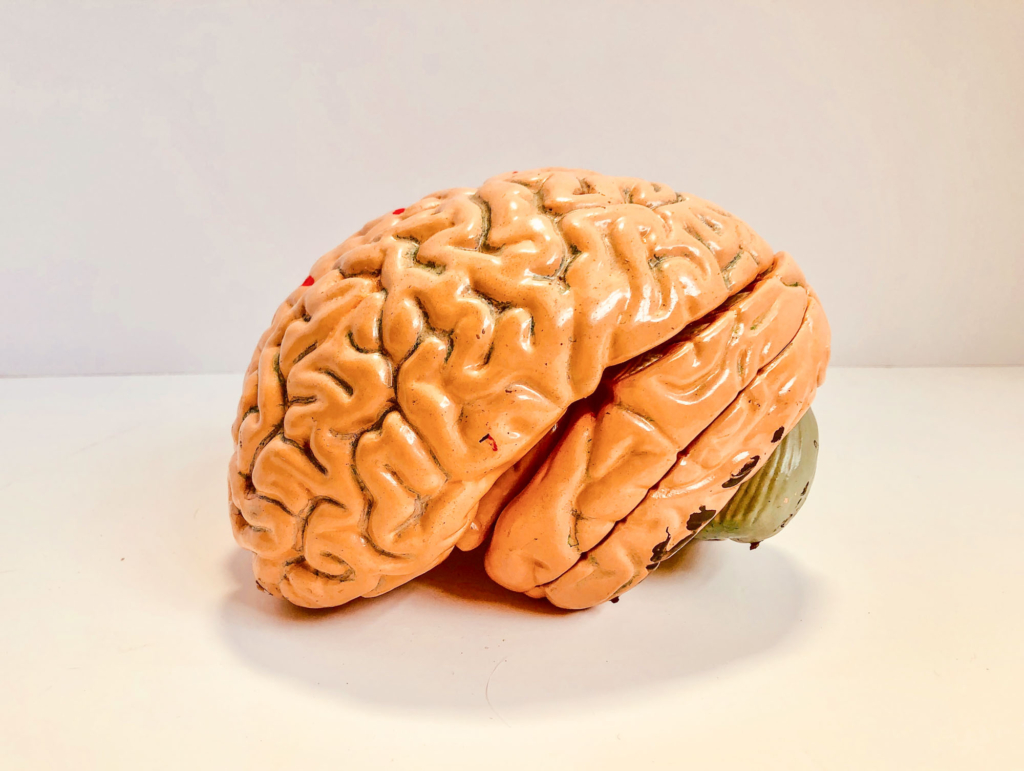Unlocking the Power of Neuroplasticity: How Your Child’s Brain Adapts and Thrives

As a parent, you play a pivotal role in shaping your child’s future, especially when it comes to their brain development. One fascinating concept that every parent should be aware of is neuroplasticity. In this blog post, we will explore what neuroplasticity is and how it works in children. Understanding neuroplasticity can empower you to support and encourage your child’s brain development in the most effective way possible.
What is Neuroplasticity?

Neuroplasticity, also known as brain plasticity or neural plasticity, refers to the brain’s remarkable ability to adapt, reorganize, and form new neural connections throughout life. Contrary to the old belief that the brain’s structure was fixed and unchangeable after a certain age, scientists now recognize that the brain is highly dynamic and malleable. This process is particularly evident during childhood when the brain is rapidly developing and adapting to various experiences and learning opportunities.
Let’s break down the concept of neuroplasticity for a clearer understanding:
Neuro: Pertaining to the brain and neurons, which are the essential nerve cells powering the brain. Plasticity: Referring to the capability of being shaped or molded. Consequently, neuroplasticity can be defined as the brain’s remarkable capacity to be shaped and molded through experiences and learning.
Shaping And Molding
It’s learning and memory.
Medical experts have come to understand that when we engage in learning and embrace new experiences, they have the power to significantly influence and modify the structure of our brains.
These fresh insights and experiences play a vital role in organizing and reorganizing our neural pathways, which are akin to the brain’s intricate ‘wiring.’
Through this ongoing process, our brains effectively ‘rewire’ themselves as they assimilate more information and glean insights from experiences. In other words, the act of learning has the remarkable ability to bring about physical changes within our brains!
Why is grasping the concept of neuroplasticity crucial when considering a baby’s brain function? Well, during infancy, every encounter and piece of information is new and significant! Remarkably, a baby’s brain forms approximately 1 million fresh neural connections every second. Hence, the most substantial shaping and molding of the brain occur in the early years of life.
Although babies may be too young to form conscious memories, they can create unconscious memories, known as implicit memories. These crucial memories can take shape as early as a few months after birth and play a pivotal role in shaping the baby’s neural pathways.
While neuroplasticity continues to occur as we age, it becomes less frequent. As we mature, our brains tend to rely more on existing neural pathways rather than forging new ones. Consequently, the neural pathways established during childhood serve as the bedrock for our learning and thinking throughout our lives.
To ensure optimal brain development, it’s essential to keep your baby engaged in active learning experiences. By doing so, you empower them to continue developing and shaping their brains in a positive and stimulating manner.
How Neuroplasticity Works in Children:
The brains of children are like sponges, eagerly soaking up experiences and information from the world around them. Neuroplasticity is most prominent during childhood, making it an ideal time for learning and skill development. Here’s how neuroplasticity works in children:
- Learning and Experience: Every experience your child encounters creates neural pathways in their brain. When a new skill is learned, like riding a bicycle or speaking a new language, the brain forms connections between neurons, strengthening these pathways. Repetition and practice are crucial for solidifying these connections, leading to long-term learning.
- Sensitive Periods: Certain periods in a child’s development are marked by heightened neuroplasticity, known as sensitive periods. During these windows, the brain is particularly receptive to specific stimuli and experiences. For instance, language acquisition is most effective during the early years, making it easier for young children to become bilingual.
- Adaptation to Challenges: Neuroplasticity allows the brain to adapt and reorganize in response to challenges or injuries. If a child experiences a brain injury, other areas of the brain can take over the functions of the damaged region, aiding in recovery and rehabilitation. Positive and stimulating experiences can enhance neural connections, promoting healthy brain development. Conversely, negative or neglectful experiences can have detrimental effects.
- Limitless Potential: The brain’s plasticity implies that your child’s potential for growth and development is virtually limitless. By providing a stimulating and nurturing environment, you can enhance their cognitive abilities, creativity, and emotional intelligence.
- Rapid learning and skill acquisition: Children have an innate capacity for learning, and neuroplasticity enables them to absorb new information quickly. This is why young children seem to learn languages, motor skills, and various concepts effortlessly.
- Synaptic pruning and strengthening: During early childhood, the brain undergoes a process known as synaptic pruning. Unused neural connections are eliminated while frequently used connections are strengthened. This process refines the brain’s circuitry, making it more efficient.
- Individual differences: Each child’s brain is unique, and neuroplasticity accounts for the variability in learning and development among children. Factors like genetics, experiences, and early interventions can influence the direction of neuroplastic changes.
- Cognitive and emotional development: Neuroplasticity is involved in the development of cognitive abilities such as memory, attention, and problem-solving, as well as emotional regulation and social skills. Early interventions can positively impact these areas, especially in children with developmental challenges.
- Neurodevelopmental disorders: In conditions like autism spectrum disorder (ASD) or attention deficit hyperactivity disorder (ADHD), neuroplasticity might be altered, leading to distinctive patterns of brain connectivity and functioning.
Encouraging Neuroplasticity in Your Child:
As a parent, you have the opportunity to foster neuroplasticity and optimize your child’s brain development. Here are some practical tips:
- Engage in Play: Play is a powerful tool for learning and brain development. Encourage creative and imaginative play, as well as activities that challenge problem-solving skills.
- Limit Screen Time: While technology can have educational benefits, excessive screen time can hinder neuroplasticity. Set reasonable limits on screen usage to allow for a variety of real-world experiences.
- Encourage Exploration: Expose your child to diverse experiences and environments. Visiting museums, parks, and engaging in outdoor activities can stimulate their brain’s capacity to adapt.
- Support Learning: Be actively involved in your child’s education. Read together, ask questions, and show enthusiasm for their learning endeavors.
- Promote a Growth Mindset: Encourage a growth mindset by praising effort and resilience rather than innate abilities. This mindset fosters a belief in the capacity to improve through dedication and hard work.
Activities To Enhance Nueroplasticity
Encouraging neuroplasticity in children involves providing experiences that stimulate their brains and promote the formation of new neural connections. Here are some activities that can help enhance neuroplasticity:
- Reading and storytelling: Reading books and telling stories to children expose them to new vocabulary, ideas, and perspectives, stimulating language centers in the brain and fostering cognitive development.
- Puzzle-solving: Engaging in puzzles and brain teasers helps children improve their problem-solving skills and spatial reasoning, which can strengthen neural connections in the brain.
- Music and rhythm: Listening to music, playing instruments, or dancing to rhythmic beats can activate multiple areas of the brain simultaneously, promoting enhanced coordination and cognitive flexibility.
- Learning new skills: Encourage children to learn new activities, such as painting, cooking, or playing a sport. These experiences challenge the brain and create new pathways in the process.
- Physical exercise: Regular physical activity, like running, promotes the release of neurotransmitters and growth factors that support brain health and neuroplasticity.
- Imaginative play: Allowing children to engage in imaginative play and role-playing activities can stimulate creativity and help develop their social and emotional intelligence.
- Outdoor exploration: Exploring nature and the outdoors exposes children to new sensory experiences, fostering brain development and creativity.
- Multilingual exposure: Introducing children to multiple languages during their early years can enhance language learning skills and lead to better cognitive flexibility.
- Building and construction toys: Toys like building blocks and construction sets help develop spatial reasoning, problem-solving, and fine motor skills, promoting neural connections.
- Cooking and baking: Involving children in cooking and baking activities provides hands-on learning experiences, stimulates multiple senses, and encourages the development of executive functions.
Remember, the key to promoting neuroplasticity in children is to offer a diverse range of experiences that challenge and engage their minds. Encouraging exploration, curiosity, and creativity can foster a strong foundation for lifelong learning and development.
Neuroplasticity is a fascinating phenomenon that underlines the incredible potential of your child’s developing brain. By understanding how neuroplasticity works and implementing strategies to support it, you can play an integral role in unlocking your child’s intellectual and emotional growth. Embrace the journey of parenthood with the knowledge that you have the power to shape your child’s future positively.
